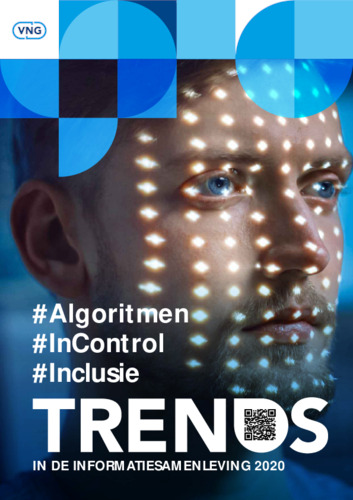- Home >
- Services >
- Access to Knowledge >
- Trend Monitor >
- Source of threat >
- Trend snippet: There are rights that we require in an information society that we are currently might not possess
Trends in Security Information
The HSD Trendmonitor is designed to provide access to relevant content on various subjects in the safety and security domain, to identify relevant developments and to connect knowledge and organisations. The safety and security domain encompasses a vast number of subjects. Four relevant taxonomies (type of threat or opportunity, victim, source of threat and domain of application) have been constructed in order to visualize all of these subjects. The taxonomies and related category descriptions have been carefully composed according to other taxonomies, European and international standards and our own expertise.
In order to identify safety and security related trends, relevant reports and HSD news articles are continuously scanned, analysed and classified by hand according to the four taxonomies. This results in a wide array of observations, which we call ‘Trend Snippets’. Multiple Trend Snippets combined can provide insights into safety and security trends. The size of the circles shows the relative weight of the topic, the filters can be used to further select the most relevant content for you. If you have an addition, question or remark, drop us a line at info@securitydelta.nl.
visible on larger screens only
Please expand your browser window.
Or enjoy this interactive application on your desktop or laptop.
There are rights that we require in an information society that we are currently might not possess
Another example is the right to repair. Critics argue that large technology companies are "planned obsolescence." This means that these companies ensure that their products - smartphones, for example - do not last longer than two years, while a longer lifespan is quite possible. For example, research shows that the average lifespan of a desktop computer decreased between 1985 and 2010 from 10.7 to 3.5 years. The right to repair could allow people to access information about the hardware and software of products, enabling them to repair them themselves - rather than buying a new product every two years.
An extension of this is the right to interoparability. A small, accessible example: it is not in the public interest that you need a different charger for Apple smartphones than for all other smartphones. Ideally, there is one type of charger that you can use for everything and is therefore interoperable. This is also applicable in other areas: if systems from different providers of online platforms are interoperable, people can leave a social network without leaving their friends behind.
Naast bestaande grondrechten die onder druk staan door digitalisering, signaleren experts ook mogelijke ontbrekende rechten. Eén voorbeeld daarvan is het recht op betekenisvol contact, zoals geformuleerd door het Rathenau Instituut (2017). De snelle opkomst van artificiële intelligentie en robotisering roept vragen op omtrent betekenisvol en ‘face-to-face’ contact. Maar is het wenselijk dat mensen in situaties terecht komen waarin zij uitsluitend met robots te maken hebben? Het antwoord op die vraagt lijkt vrijwel zeker ‘nee’. Er is veel psychologisch onderzoek dat aantoont dat mensen niet zonder contact met hun medemens kunnen. Het recht op betekenisvol contact kan vastleggen dat we zulke situaties moeten voorkomen.
Een ander voorbeeld is het recht om te repareren. Critici stellen dat grote technologiebedrijven aan ‘geplande veroudering’ doen. Dat betekent dat deze bedrijven ervoor zorgen dat hun producten – bijvoorbeeld smartphones – niet langer dan twee jaar mee gaan, terwijl een langere levensduur best mogelijk is. Uit onderzoek blijkt bijvoorbeeld dat de gemiddelde levensduur van een desktop computer tussen 1985 en 2010 verminderde van 10,7 naar 3,5 jaar. Het recht om te repareren zou ervoor kunnen zorgen dat mensen toegang krijgen tot informatie over de hardware en software van producten, zodat ze zelf in staat worden gesteld om deze producten te repareren – en niet elke twee jaar een nieuw product moeten aanschaffen.
In het verlengde daarvan ligt het recht op interoparabiliteit. Een klein, laagdrempelig voorbeeld: het is niet in het publieke belang dat je voor Apple-smartphones een andere oplader nodig hebt dan voor alle andere smartphones. Idealiter bestaat er één type oplader dat je overal voor kunt gebruiken en dus interoperabel is. Dit is ook in andere gebieden toepasbaar: als systemen van verschillende aanbieders van online platforms interoperabel zijn, dan kunnen mensen een sociaal netwerk verlaten zonder dat ze hun vrienden achterlaten.




